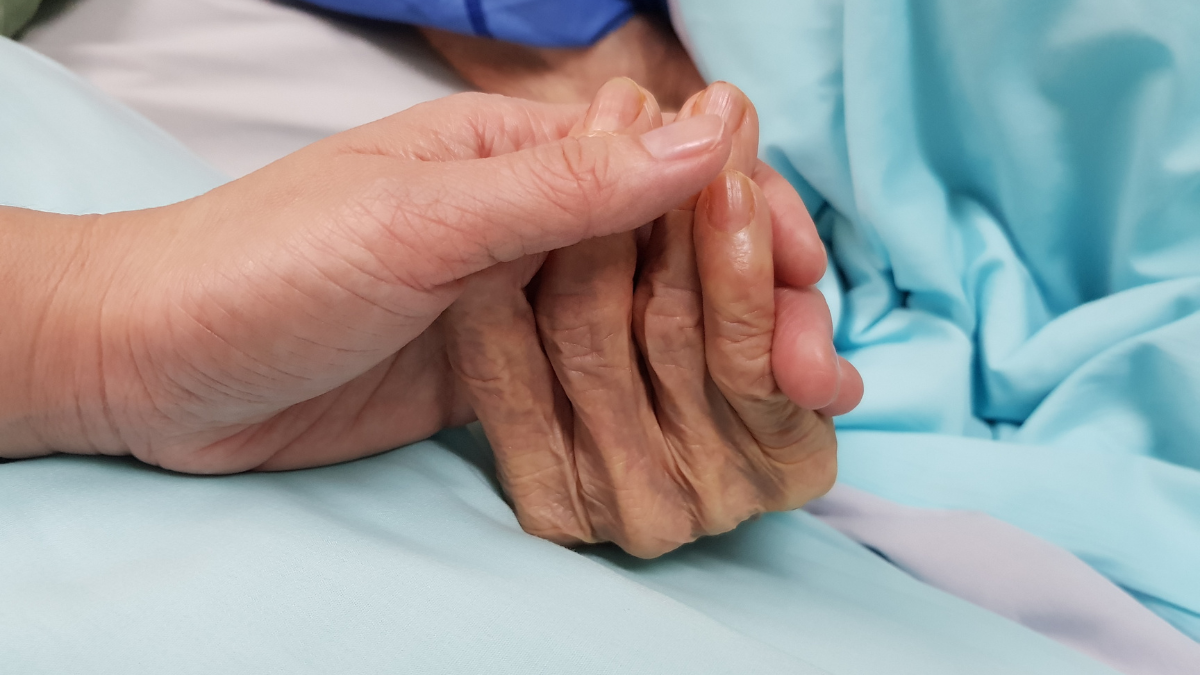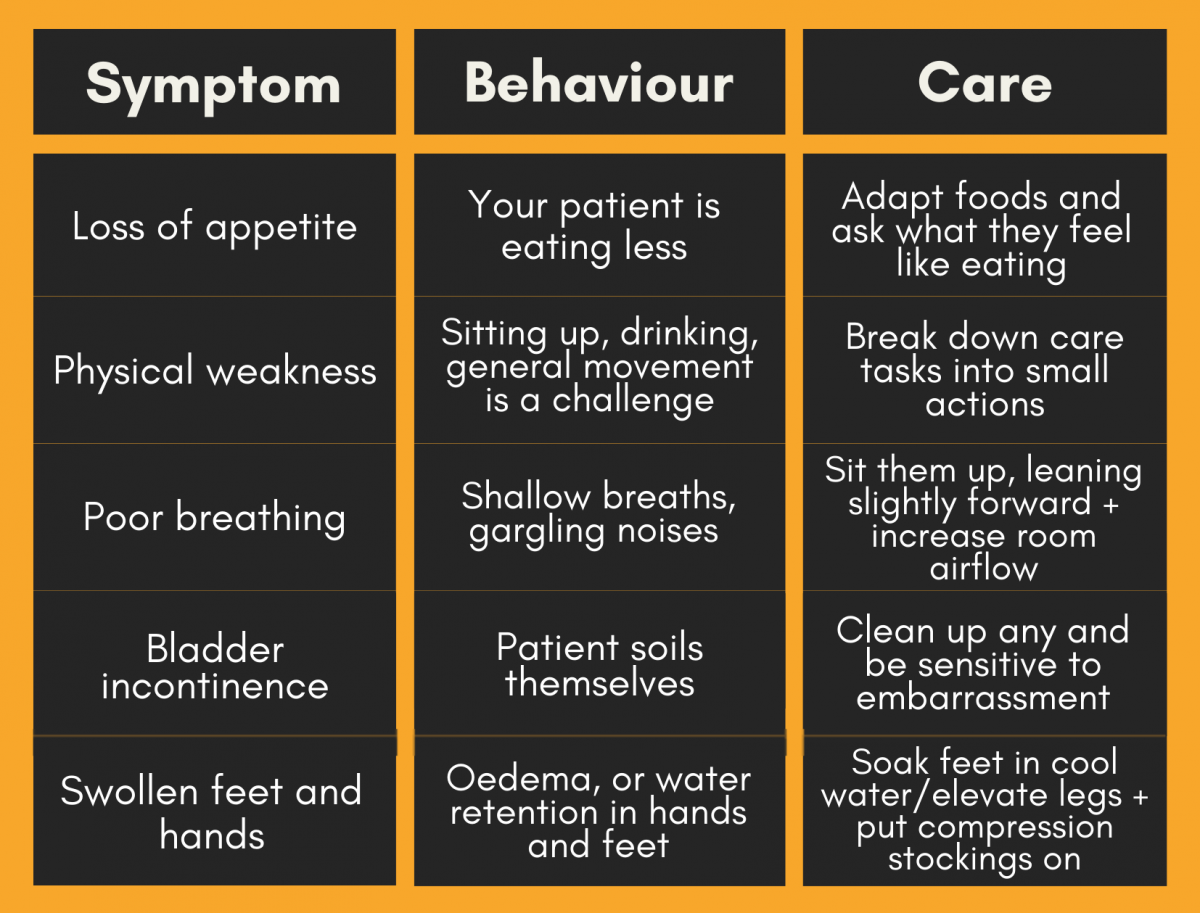
| 21 August 2020
Discussing death with a loved one is challenging to say the least. By the same token, being the health or social care professional responsible for discussing an end of life care plan with a dying or critically ill patient and their family members is a huge professional challenge.
It’ll be tough – on everyone involved – but getting end of life care planned and completed well will be very rewarding. Working with someone in their final months or days requires you to be knowledgeable, skilled, and compassionate. To help you understand what’s expected, we’re going to look at:
- Differences between palliative care and end of life care
- What end of life care looks like
- Principles to be aware of as a professional
- What to expect as a patient dies
What’s the difference between palliative and end of life care?
Sometimes it may feel like these two concepts can be interchangeable. Actually, they are different types of care that require different skills and knowledge.
Palliative care
Palliative care is about giving the best quality of life to someone who is likely to die sooner than expected. It offers social support and tries to offer a form of normality and daily functions. In contrast, working with someone at the end of their life is about making them comfortable as they die.
Palliative care offers support, care, and treatment to people with a life-limiting illness. You might be familiar with terms such as “life-threatening”, “terminal”, or “advanced” illnesses in the same context. Examples of the types of conditions that can be life-limiting are:
- Cancer
- Chronic liver disease
- Motor neurone disease
Palliative care will take care not just of the physical needs of a person, but their emotional, social, and even spiritual requirements, focussing on quality of life. Pain management may be one of the first things you’d think about, but social needs like washing and dressing and offering support to family and friends of your patient is also important.
End of life care
End of life care is a part of palliative care. It aims to allow a person to be comfortable at the end of their life. We don’t always know when someone might die, meaning the end of life care can be in place for weeks or even months. It’s generally offered to someone a doctor believes is in the last year of their life.
End of life care, at home or in a professional setting, focusses on managing physical and emotional needs. Ensuring your patient is treated with dignity and respect is paramount.
What’s an End of Life Care Pathway?
The plan that encompasses the work to be completed by various professionals towards the end of a patient’s life is known as an End of Life Care Pathway. It’s the steps that need to be taken to make sure your patient is comfortable in their mind and body.
There are six steps in designing and carrying out an End of Life Care Pathway. You may be involved in completing one, so here’s an overview of what you’ll need to do:
Step 1
Discussion – Start the conversation about dealing with someone’s death. You’ll have recognised the patient is nearing death and you need to talk to them, their family and their friends so that everyone knows what to expect and who’ll be making decisions.
Step 2
Assessment, plan, and review – Understand the wishes and the medical needs of the patient. Take into consideration any cultural or religious needs, whether they want at-home care, and anything else that’s personally important.
Step 3
Co-ordination of care – Every patient will have different needs. Plan to have the right professionals in place, such as nurses, care assistants, or doctors, ready to step into a role when needed.
Step 4
Delivery – This is when the plan is acted upon. Care needs to be provided wherever is safest and as close to the wishes of the patient as possible, always ensuring consent.
Step 5
Final days – Know what death looks like so you can anticipate it. By knowing what to expect you can make a person’s last days comfortable rather than stressful.
Step 6
Care after death – Once dead, facilitating wishes about funerals and supporting the patient’s loved ones in decisions is equally important.
What are the principles of end of life care?
Working on an end of life care plan means you need to be aware of some core ideas. These are:
- Individuality – care is not one-size-fits-all
- Culture – cultural, religious, and ethnic demands of a patient
- Location – end of life care at home should always be an option
- Care – contact must be sensitive and empathetic
- Consent – gain consent of the patient, and if not, the people they have appointed
- Communication – professionals, patients, and key people need channels to talk
What are the signs of someone dying?
Identifying a dying person comes with time and experience. Being able to recognise the end of life signs will help you prepare the patient and their important people about what’s coming. With time, you will become more intuitive to your patients’ struggle, knowing the signs like the back of your hand, however, having specific giveaways to look out for can be really helpful to begin with.
Here’s a guide to the end of life signs and what you can do to alleviate the discomfort:

Compassion always wins
Caring for someone at the end of life is taxing on everyone involved. No two deaths will ever be the same, but you can still be prepared to know how to offer the best support possible.
eLearning for healthcare
Unlock your potential – our healthcare eLearning courses make it simple to access high quality content, that deliver on your statutory and mandatory training and compliance needs.
